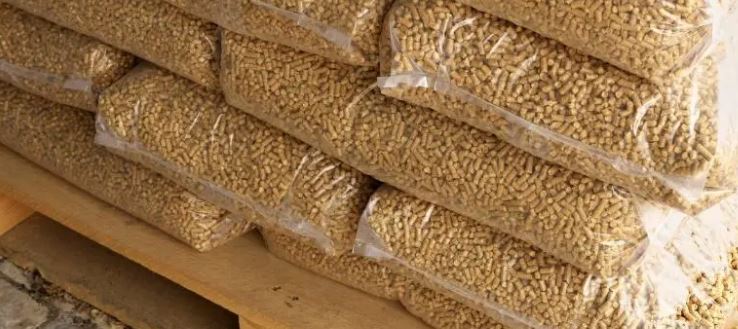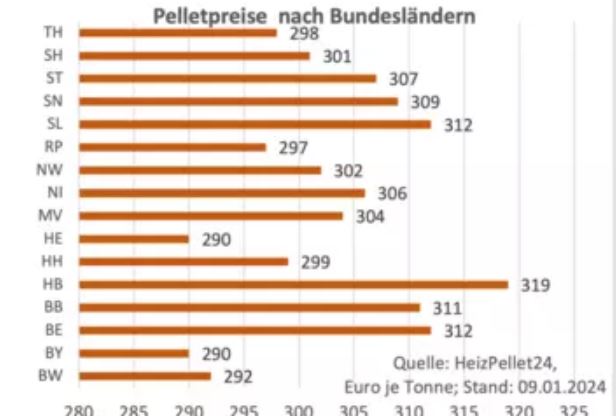
German Pellet prices continue to fall in January. Overall, wood
pellets cost as much as they last did around 2 years ago. In six
federal states, wood pellets cost less than €300 per tonne in
the second week of January and in other federal states the €300
mark is not too far away.
Demand from pellet buyers remains surprisingly high. "Due to the
very favourable prices, household stockpiling activity picked up
again. 2023 will also be the year with the highest demand in
online trading to date," say the experts at Holzpellts24.
One reason for the continuing high demand is the large number of
new pellet heating systems installed during the energy crisis.
However, another important aspect is that pellet buyers are
monitoring the market much more closely than in the past and
reacting immediately to changes in prices. This stronger focus
on current market developments has also recently led to
continued strong customer interest.
Another important aspect, however, is that pellet buyers observe
the market more closely than in the past and react immediately
to falling prices. This stronger focus on current market
developments has also recently led to continued strong customer
interest.
According to the experts at Heizpellet24, the national average
pellet price fell to EUR 303 per tonne in the second week of
January. The market observers also assume that "pellet customers
in Germany could see a price per tonne starting with a two again
in 2024 for the first time in over two years." This is certainly
what the typical seasonal price patterns of the past suggest.
After a rather sideways price trend in January and February in
normal years, pellet prices usually fall significantly at the
end of the heating period from March or April, the experts at
Holzpellets24 expect. According to market observers, this could
also happen this year.

In six federal states, wood pellets cost less than €300 per
tonne in the second week of January and in other federal states
the €300 mark is not too far away.
Why pellet prices will continue to fall in 2024 ?
On a national average, pellet prices reached their lowest level
for two years around the beginning of December and continued to
fall in January. According to most pellet experts, one reason
for the sharp fall in pellet prices is the sharp drop in the
price of wood and wood by-products.
The collapse in prices on the timber market has also depressed
prices for most other wood products and wood by-products such as
wood pellets in recent months. An increase in the price of wood
pellets is therefore only to be expected if timber prices also
rise significantly again or if the supply of timber and timber
by-products becomes noticeably tighter due to reduced timber
production. However, this is not yet apparent. On the contrary:
the severe construction crisis is keeping pressure on the timber
market.
In addition, there is another aspect: the recent strong increase
in domestic production of wood pellets apparently continues to
exceed the (also growing) domestic demand from private and
commercial customers, pellet experts believe. This structural
supply surplus has also put a lot of pressure on pellet prices
and is preventing or significantly slowing down an increase.
However, pellet traders cite another important reason for the
persistently low pellet prices: Numerous customers stocked up
very early this year at the last price low in April in order to
avoid a possible price increase at the end of the year (as in
2022) or to avoid suddenly facing supply problems, as was the
case last year.
All in all, all indicators suggest that pellet prices are more
likely to fall further than rise.
Source: Holzpellts24
กก